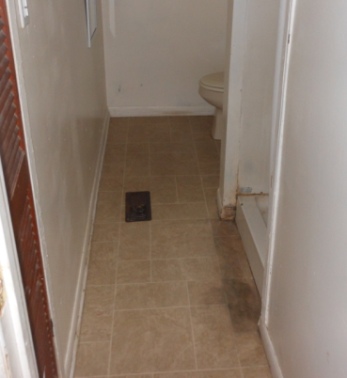A/C Mold Remediation Solutions
Residential A/C Mold Removal Services
A Plus Enviro-Services domestic air duct and vent cleaning specialists are certified and trained in domestic duct cleansing and A/C system mold cleansing and restoration. We provide customized property HEATING AND COOLING duct and vent cleansing, mold removal, and other cleaning services. Our mission is to provide affordable, educational, truthful, local and high quality assistance to our residential customers by improving their indoor air quality, energy performance, and security. Did you understand air-borne pollutants are pulled into the air ducts each time the heating & cooling system runs. Gradually, these impurities increase inside the ductwork, forming a perfect breeding place for mold, germs, fungi, and other microbes.
How We Do It
The existence of microbial development (mold) in an A/C system is a common issue and a range of factors can add to the microbial growth. The HEATING AND COOLING system, consisting of piping and drain pans, can be sources of microbial growth. An elevated mold condition can trigger several adverse effects with the most common issue being allergic reaction signs. The items new is that typically mold contamination in A/C systems and air vents are confined to small locations.
Cleaning up is normally not extremely complex. Do not lose your cash with unqualified business and fraudsters. Call us for a totally free and instructional estimate today. Strong Acid Water Sanitizer A Plus Enviro-Services makes use of a strong acidic water as a sterilizing representative due to the fact that it's organic, completely safe for human beings, pets, and the environment. This strong Acidic Water is an electrolytic water with electrical potential, which suggests that its chemical decomposition is produced by passing an electrical current through a liquid or solution containing ions. This includes the hypochlorous acid (SDS) produced from an anode when electrolysis happens. It is made by using an electrolysis enhancer to faucet water, this in itself is not a chemical.

Strong Acidic Water 2.5 pH works as an antifungal, antibacterial, and an antiviral representative. This water eliminates germs within an average of 30 seconds, and because of this the water is more powerful than popular disinfectants and it has multi-purpose use. Strong Acidic water was approved for sanitizing food in June 2002, in accordance with the Food Health Law, under the name hypochlorous acid water.
Find out more Why Select Us A Plus Enviro Services Inc. DBA Air Duct Cleansing Plus is totally accredited, bonded and guaranteed. What our consumers are saying We can highly suggest them as a super friendly and professional contractor who helped us greatly with a recent evaluation of our house's air duct/vent system.
Indoor mold Wikipedia
Fungal development that establishes on wet materials Indoor mold on the head jamb of the window in a multi-storey structure. Mold (American English) or mould (British English), likewise often described as mildew, is a fungal development that establishes on damp materials. Mold is a natural part of the environment and plays a vital part in nature by breaking down dead organic matter such as fallen leaves and dead trees; indoors, mold development need to be avoided. Mold recreate by ways of small spores. The spores resemble seeds, but unnoticeable to the naked eye, that float through the air and deposit on surfaces. When the temperature, wetness, and available nutrient conditions are appropriate, the spores can form into new mold colonies where they are deposited.
Exposure to high levels of mycotoxins can cause neurological problems and death. Extended direct exposure (for example, everyday exposure) can be particularly harmful. Mycotoxins can persist in the indoor environment even after death of the fungi. They can adhere to dust particles and can spread through the air connected to these dust particles or spores. [3] There must be really specific temperature and humidity conditions in order for fungis to produce mycotoxins.
Signs [modify] Symptoms of mold direct exposure might include nasal and sinus congestion; runny nose, eye irritation; scratchy, red, watery eyes, respiratory issues, such as wheezing and difficulty breathing, chest tightness, cough, throat inflammation, https://www.washingtonpost.com/newssearch/?query=Mold inspection skin irritation (such as a rash), headache, and persistent sneezing.
Immune-compromised individuals and individuals with persistent lung health problems, such as obstructive lung illness, may get serious infections in their lungs when they are exposed to mold. These individuals must keep away from areas that are most likely to have mold, such as compost piles, cut turf, and woody areas.
Asthma [edit] Infants may develop breathing signs as an outcome of exposure to Penicillium, a fungal genus. Indications of mold-related respiratory problems in an infant consist of a consistent cough or wheeze. Increased exposure increases the possibility of establishing breathing symptoms throughout the very first year of life. Studies have suggested a connection in between the possibility of developing asthma and exposure to Penicillium.
Causes and growing conditions [edit] Mold is discovered everywhere and can grow on practically any compound when moisture is present. They recreate by spores, which are brought by air currents. When spores arrive at a wet surface area appropriate for life, they begin to grow. Mold is usually found indoors at levels which do not affect most healthy individuals. Since common building products are capable of sustaining mold development and mold spores are common, mold growth in an indoor environment is usually connected to water or wetness exposure and may be triggered by insufficient drying of floor covering materials (such as concrete). Flooding, dripping roofings, building-maintenance or indoor-plumbing issues can lead to interior mold growth. Water vapor frequently condenses on surface areas cooler than the moisture-laden air, enabling mold to flourish. [citation required] This moisture vapor travels through walls and ceilings, normally condensing during the winter season in climates with a long heating season. Floors over crawl areas asbestos and mold services and basements, without vapor barriers or with dirt floors, are mold-prone. The "doormat test" detects moisture from concrete slabs without a sub-slab vapor barrier.